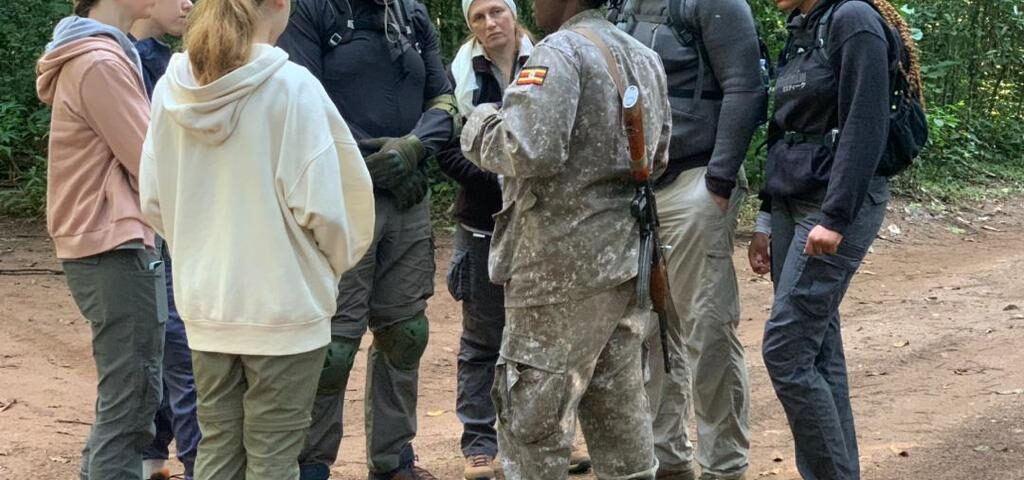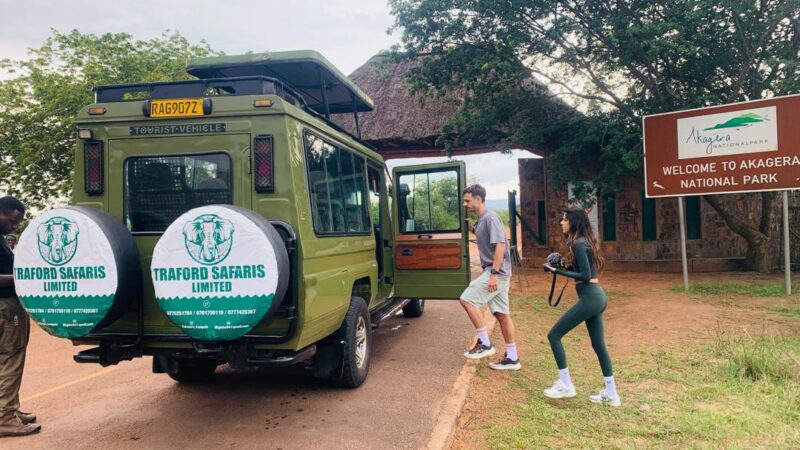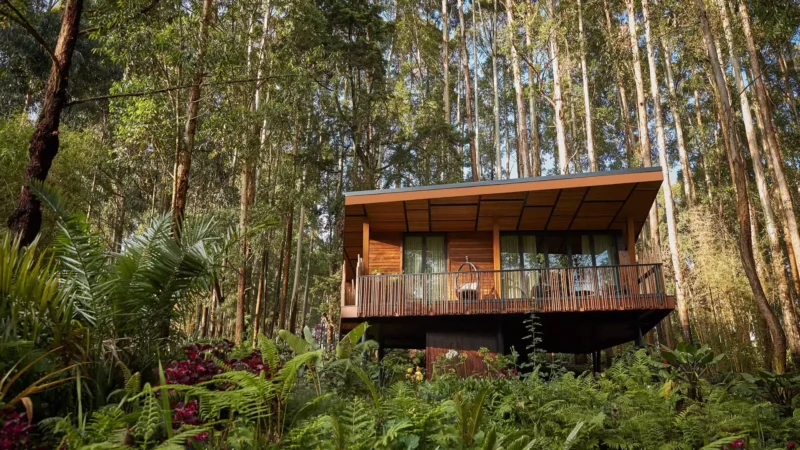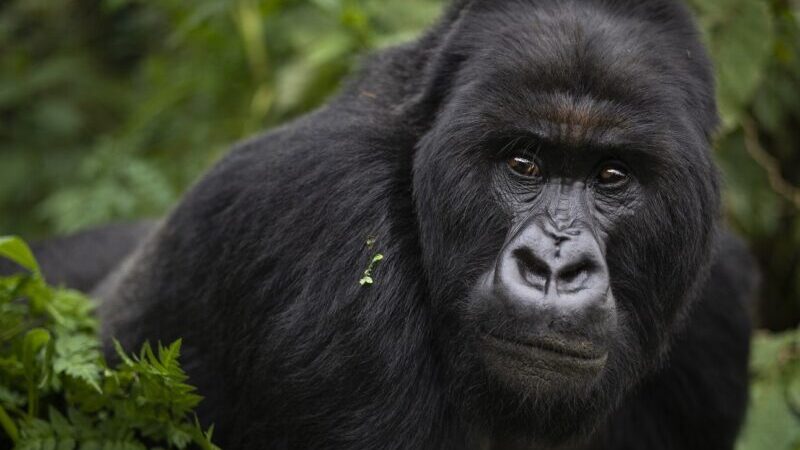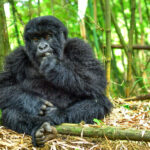
Gorilla Trekking in Mgahinga vs Bwindi
May 27, 2025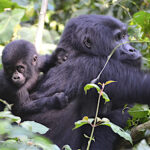
Can I Trek Gorillas in Uganda from Rwanda?
May 27, 2025A Day in the Life of a Gorilla Trekking Guide
Gorilla trekking is one of the most moving wildlife experiences on Earth—but behind every trek is a dedicated gorilla trekking guide whose skill, passion, and knowledge make the journey possible. In Rwanda and Uganda, these guides are not only conservationists and trackers, but also storytellers, protectors, and cultural ambassadors.
This article takes you behind the scenes to explore a day in the life of a gorilla trekking guide in the misty mountains of Volcanoes National Park (Rwanda) and Bwindi and Mgahinga Gorilla National Parks (Uganda).
5:00 AM – The Day Begins Early
The day of a gorilla guide starts before sunrise. Most guides rise by 5:00 AM to prepare for the day. The early start is essential, as gorilla trekking requires timely coordination with trackers already deep in the forest.
Morning Routine: Gear Check and Safety Briefing
At the ranger station, guides perform a meticulous check of essential gear:
-
Radios and communication devices
-
First aid kits
-
Trekking poles
-
Waterproof bags
-
Permit lists and group allocations
Before heading out, guides also receive updates from advance trackers—the team that enters the forest at dawn to locate the gorilla families and monitor their movement.
7:00 AM – Welcoming the Guests
By 7:00 AM, the guide meets with guests at the park headquarters. This is a crucial part of the day where they:
-
Check permits
-
Divide trekkers into groups (maximum of 8 per group)
-
Brief visitors on the dos and don’ts of gorilla trekking
-
Share a bit of local history, gorilla behavior, and safety guidelines
In Uganda, this takes place at sector headquarters like Buhoma, Ruhija, or Rushaga in Bwindi, or Ntebeko Gate in Mgahinga. In Rwanda, the staging point is at Kinigi Park Headquarters in Volcanoes National Park.
Building Excitement and Trust
This moment is also when the guide gauges the group’s fitness levels, concerns, and expectations. Great guides tailor their pacing and tone to the group, offering both reassurance and inspiration.
8:00 AM – The Trek Begins
With porters and security rangers in tow, the trek begins. A gorilla guide leads the group through rugged terrain—dense jungle, bamboo forests, slippery trails, and steep slopes.
Reading the Forest
The guide interprets signs of recent gorilla movement—broken branches, nests, dung, and vocalizations. They also share insights on:
-
Indigenous plants and their uses
-
Bird and butterfly species
-
Signs of other wildlife like forest elephants or duikers
Communication is Key
Throughout the trek, guides remain in constant radio contact with trackers who are shadowing the gorilla families. This coordination helps direct trekkers efficiently and safely to the gorillas’ current location.
10:00 AM to 1:00 PM – The Encounter
Once the gorilla group is located, the guide instructs trekkers to leave their bags behind and approach quietly with cameras in hand. From here, the clock starts: only one hour is allowed with the gorillas to minimize stress on the animals.
Ensuring Safety and Respect
The guide ensures that:
-
A 7-meter distance is maintained
-
No flash photography is used
-
Voices are kept low
-
Guests do not make sudden movements
-
Rules around illness and disease prevention are followed
During this golden hour, the guide helps identify individual gorillas—silverbacks, juveniles, mothers, and infants—sharing stories and insights about their personalities, hierarchies, and behavior.
1:00 PM – Trek Back and Farewells
After the viewing, the group begins the trek back. Depending on the gorillas’ location, the return hike can take 30 minutes to 3 hours.
Back at the headquarters, the guide often participates in a debriefing session:
-
Answering questions
-
Handing out tracking certificates
-
Celebrating trekkers’ success
Some guests are emotional at this point, and guides often help process the experience, underscoring the importance of gorilla conservation.
3:00 PM to 5:00 PM – Post-Trek Duties
The day doesn’t end with the trek. Gorilla guides return to the office to:
-
File report logs of the trek and sightings
-
Share any health concerns or behaviors observed among the gorillas
-
Coordinate with conservationists and veterinary teams if necessary
-
Engage in guide training sessions or ranger meetings
In some cases, guides also visit local communities, helping with education programs or guiding cultural tours that benefit neighboring villages.
The Heart of Conservation
Being a gorilla trekking guide is not just a job—it’s a calling. Many guides are former poachers or local residents who’ve been trained and empowered to protect wildlife through tourism. Their deep knowledge of the terrain, culture, and wildlife is unmatched.
In both Rwanda and Uganda, gorilla guides play a critical role in:
-
Anti-poaching efforts
-
Eco-tourism development
-
Community engagement and support
-
Wildlife health monitoring
Their passion and dedication have helped turn mountain gorilla tourism into one of Africa’s most successful conservation stories.
The next time you embark on a gorilla trek in Rwanda or Uganda, take a moment to appreciate the guide walking in front of you. Their work is challenging, risky, and physically demanding—but they do it every day with passion and purpose.
At Traford Safaris Ltd, we work closely with the best guides in both countries to ensure that your gorilla trekking experience is not just memorable, but also ethical, educational, and conservation-driven.
Book your next gorilla trekking safari with us, and witness firsthand the heart and soul behind one of Africa’s greatest wildlife adventures.

